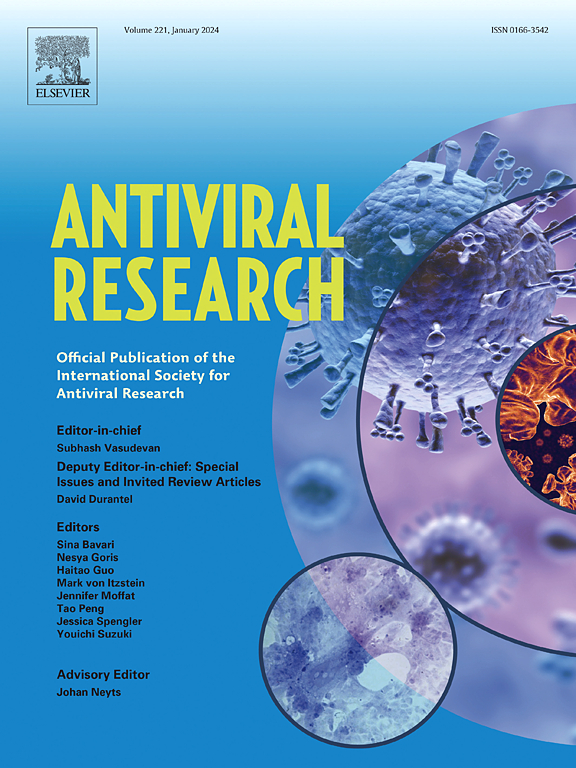聚乙二醇干扰素为基础的治疗与核苷(t)类似物单一治疗在非肝硬化hbeag阳性慢性乙型肝炎患者中的长期影响
IF 4
2区 医学
Q1 PHARMACOLOGY & PHARMACY
引用次数: 0
摘要
背景与目的:在hbeag阳性的慢性乙型肝炎(CHB)中,干扰素(IFN)为基础的治疗与核苷(t)类似物(NA)单一治疗的长期临床获益尚未明确。本研究旨在评估这些治疗策略之间新发肝硬化的累积发生率、血清学反应和肝细胞癌(HCC)的发展。方法:分析了两个独立的非肝硬化hbeag阳性CHB患者队列:treatment-naïve队列(n = 686)和na经历队列(n = 531)。患者接受ifn为基础的治疗或NA单药治疗。倾向评分匹配(PSM)用于最小化组间异质性。主要终点是新发肝硬化的累积发生率。结果:PSM后,在treatment-naïve (3.3% vs 20.0%, p = 0.005)和NA-经历(4.9% vs 20.9%, p = 0.034)队列中,基于ifn的治疗组的10年新发肝硬化累积发生率均显著低于NA单药治疗组。在两个队列中,基于干扰素的治疗也导致了更高的血清学反应率,包括HBeAg损失(treatment-naïve: 84.7% vs 55.6%;na经历:60.4% vs 43.6%, p < 0.001)和HBsAg损失(treatment-naïve: 14.3% vs 5.7%, p = 0.006;na经验:10.2% vs 1.3%, p < 0.001)。亚组分析显示,接受以干扰素为基础的治疗的患者在96周内实现HBeAg损失的长期获益最大,肝硬化发生率较低,HBsAg损失率较高。虽然ifn组HCC发生率较低,但差异无统计学意义(p < 0.05)。结论:在hbeag阳性CHB患者中,基于干扰素的治疗在降低肝硬化风险和增强血清学反应方面比NA单药治疗具有更优越的长期益处。本文章由计算机程序翻译,如有差异,请以英文原文为准。

Long-term effects of peginterferon-based therapy versus nucleos(t)ide analogue monotherapy in non-cirrhotic HBeAg-positive chronic hepatitis B patients
Background & aims
The long-term clinical benefits of interferon (IFN)-based therapy compared to nucleos(t)ide analogue (NA) monotherapy in HBeAg-positive chronic hepatitis B (CHB) have not been well defined. This study aimed to evaluate the cumulative incidence of new-onset cirrhosis, serological responses, and hepatocellular carcinoma (HCC) development between these treatment strategies.
Methods
Two independent cohorts of non-cirrhotic, HBeAg-positive CHB patients were analyzed: a treatment-naïve cohort (n = 686) and an NA-experienced cohort (n = 531). Patients received either IFN-based therapy or NA monotherapy. Propensity score matching (PSM) was employed to minimize intergroup heterogeneity. The primary endpoint was the cumulative incidence of new-onset cirrhosis.
Results
After PSM, the 10-year cumulative incidence of new-onset cirrhosis was significantly lower in the IFN-based therapy group compared to the NA monotherapy group in both the treatment-naïve (3.3 % vs 20.0 %, p = 0.005) and NA-experienced (4.9 % vs 20.9 %, p = 0.034) cohorts. IFN-based therapy also resulted in significantly higher serological response rates across both cohorts, including HBeAg loss (treatment-naïve: 84.7 % vs 55.6 %; NA-experienced: 60.4 % vs 43.6 %, both p < 0.001) and HBsAg loss (treatment-naïve: 14.3 % vs 5.7 %, p = 0.006; NA-experienced: 10.2 % vs 1.3 %, p < 0.001). Subgroup analysis showed that patients receiving IFN-based therapy who achieved HBeAg loss within 96 weeks had the greatest long-term benefits, with lower cirrhosis incidence and higher HBsAg loss rates. Although the incidence of HCC was lower in the IFN-based group, the difference did not reach statistical significance (both p > 0.05).
Conclusions
IFN-based therapy provides superior long-term benefits over NA monotherapy in reducing cirrhosis risk and enhancing serological responses in HBeAg-positive CHB patients.
求助全文
通过发布文献求助,成功后即可免费获取论文全文。
去求助
来源期刊

Antiviral research
医学-病毒学
CiteScore
17.10
自引率
3.90%
发文量
157
审稿时长
34 days
期刊介绍:
Antiviral Research is a journal that focuses on various aspects of controlling viral infections in both humans and animals. It is a platform for publishing research reports, short communications, review articles, and commentaries. The journal covers a wide range of topics including antiviral drugs, antibodies, and host-response modifiers. These topics encompass their synthesis, in vitro and in vivo testing, as well as mechanisms of action. Additionally, the journal also publishes studies on the development of new or improved vaccines against viral infections in humans. It delves into assessing the safety of drugs and vaccines, tracking the evolution of drug or vaccine-resistant viruses, and developing effective countermeasures. Another area of interest includes the identification and validation of new drug targets. The journal further explores laboratory animal models of viral diseases, investigates the pathogenesis of viral diseases, and examines the mechanisms by which viruses avoid host immune responses.
 求助内容:
求助内容: 应助结果提醒方式:
应助结果提醒方式:


